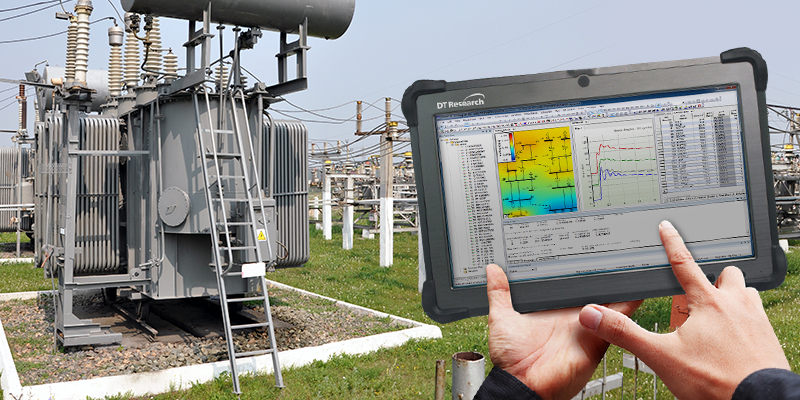
In the rapidly evolving landscape of energy demands, environmental consciousness, and technological progress, grid modernization stands as a cornerstone for achieving a sustainable energy future. As the world transitions towards cleaner energy sources and decentralized energy resources, the need for robust and innovative solutions in utilities management becomes increasingly evident. This article explores the role of rugged solutions, particularly rugged tablets, in the effective implementation of grid modernization strategies and their application in smart energy utilities management.
Rugged Tablets for Smart Energy Utilities Management
Distribution grid planners play a crucial role in navigating the complexities of the clean energy and Distributed Energy Resources (DER) transition. To meet these challenges head-on, investing in digital innovation is imperative. One of the key components of this innovation is the integration of rugged tablets tailored for utility monitoring and optimizing grid operations.
These rugged tablets serve as invaluable tools for utility companies aiming to enhance their grid management capabilities. By providing planners with the necessary data tooling, forecasting abilities, and optimization applications, these powerful and reliable mobile computers empower them to make informed decisions in real time, ensuring the efficient operation of the grid.
Digital Substations and Virtualization
To meet the evolving needs of utilities, fully digital substations and the virtualization of protection and automation applications have become indispensable. These solutions offer a myriad of benefits, ranging from remote maintenance to enhanced fault analysis, improved cybersecurity controls, and increased overall safety.
Fully digital substations enable utility companies to embrace a future-ready approach. The implementation of automatic test scenarios and adaptive protection capabilities supports the dynamic nature of the grid. By embracing digitalization and virtualization, utilities can not only enhance their operational efficiency but also lay the groundwork for new designs and innovations in future substations.
Benefits of Rugged Solutions in Utilities Management
The integration of rugged tablets into utility management brings forth a host of benefits that contribute to the overall success of grid modernization initiatives.
These benefits include:
- Remote Maintenance: Rugged tablets facilitate remote maintenance, reducing the need for physical presence in the field. This not only saves time but also enhances operational efficiency.
- Fault Analysis: Easy fault analysis is made possible through the advanced capabilities of rugged tablets. Quick identification and resolution of issues contribute to improved grid reliability.
- Cybersecurity Controls: As utilities become more interconnected, the importance of robust cybersecurity controls cannot be overstated. Rugged tablets offer enhanced security features, protecting critical infrastructure from potential cyber threats.
- Safety Improvements: The implementation of rugged solutions contributes to improved safety for field personnel. With features such as real-time monitoring and communication capabilities, workers can navigate potential hazards more effectively.
- Automatic Test Scenarios: Rugged tablets enable the implementation of automatic test scenarios, streamlining testing processes and ensuring the continuous functionality of grid systems.
- Adaptive Protection Capability: The adaptive protection capability of rugged tablets is crucial in supporting the dynamic nature of the grid. This ensures that the grid can effectively respond to changes and fluctuations in demand.
In conclusion, rugged solutions, particularly rugged tablets, play a pivotal role in the successful implementation of grid modernization strategies in smart energy utilities management. As the energy landscape continues to evolve, embracing digital innovation and resilient infrastructure becomes paramount for building a more efficient, reliable, and sustainable grid.
The collaborative efforts of distribution grid planners, utility companies, and technology providers are essential in driving breakthroughs that shape the future of energy. By investing in rugged ultra mobile solutions, utilities can not only meet the challenges of today but also lay the foundation for a resilient and adaptive grid that can accommodate the needs of tomorrow.

